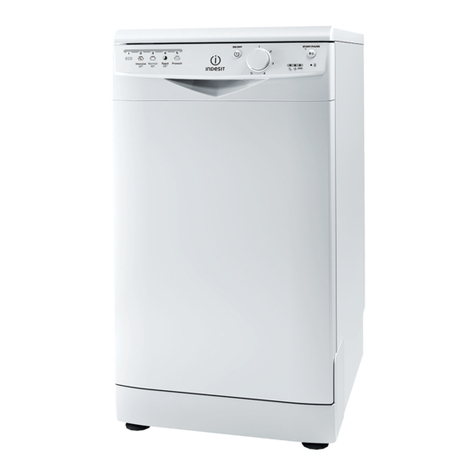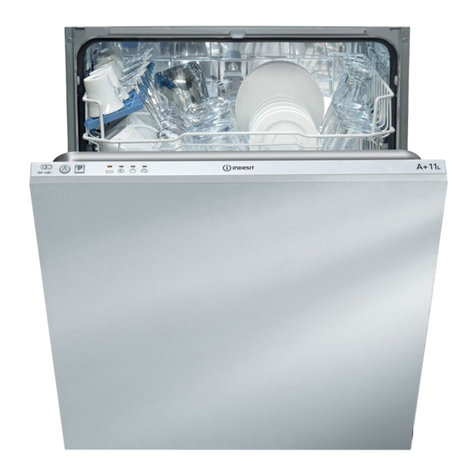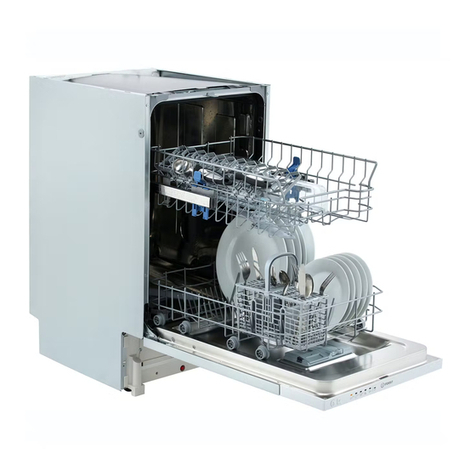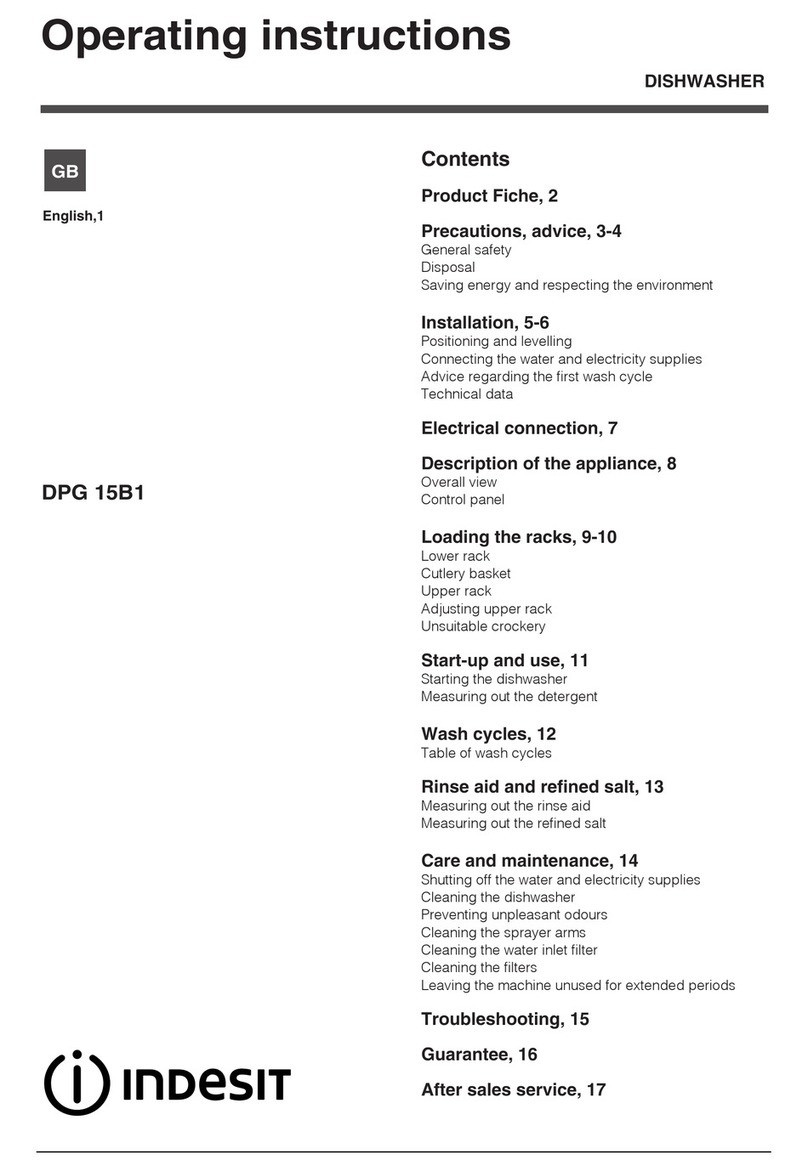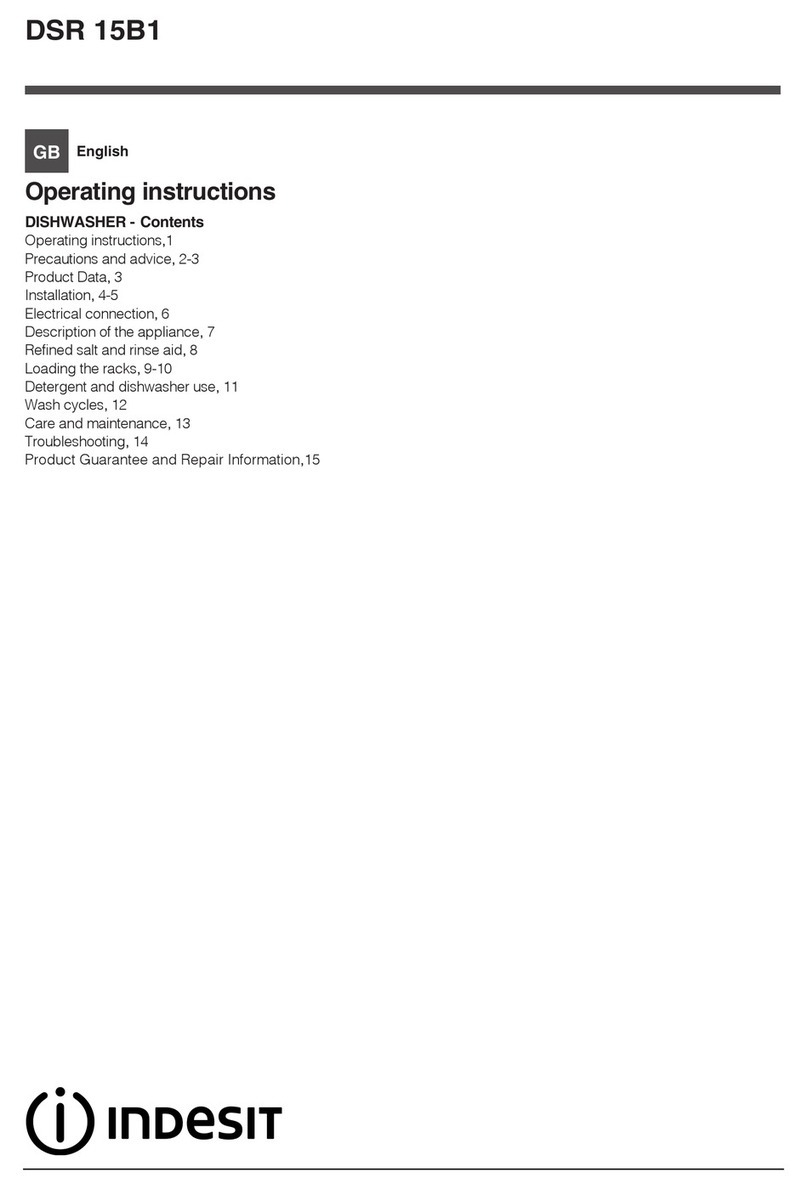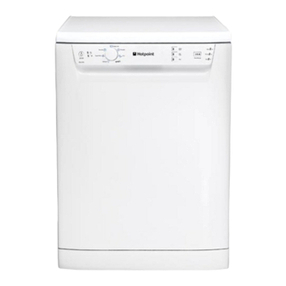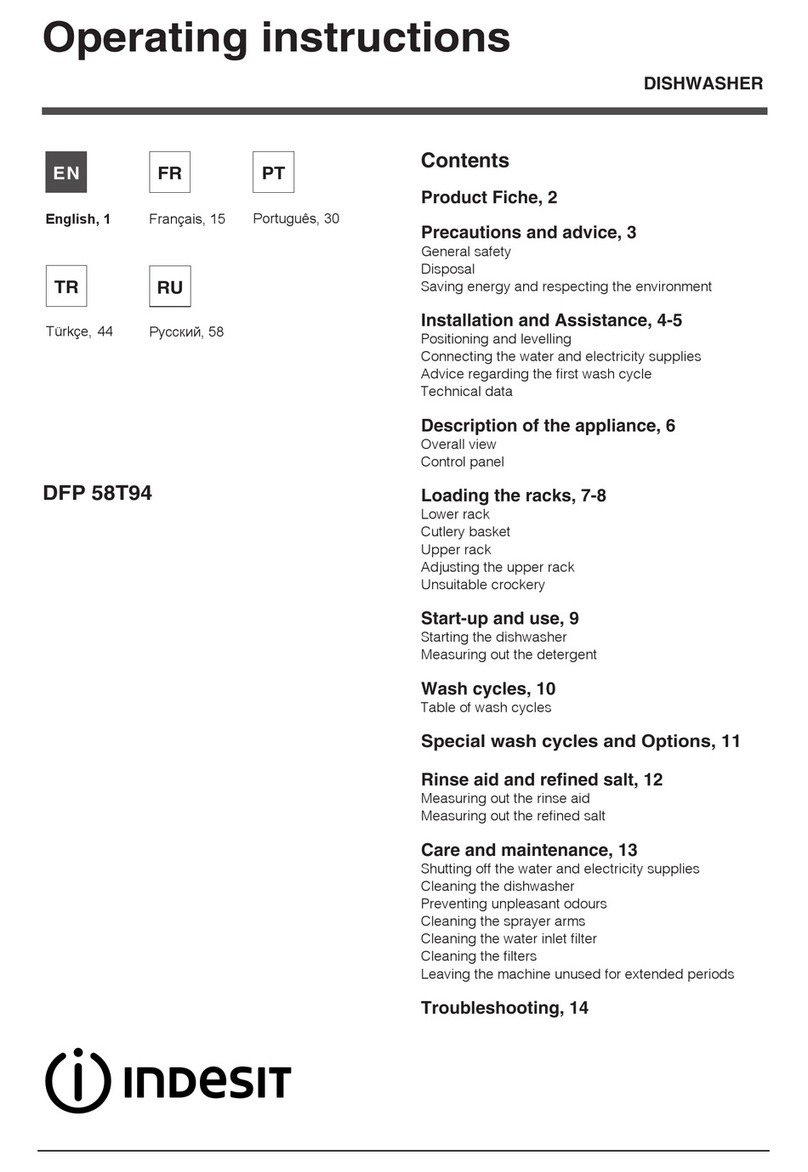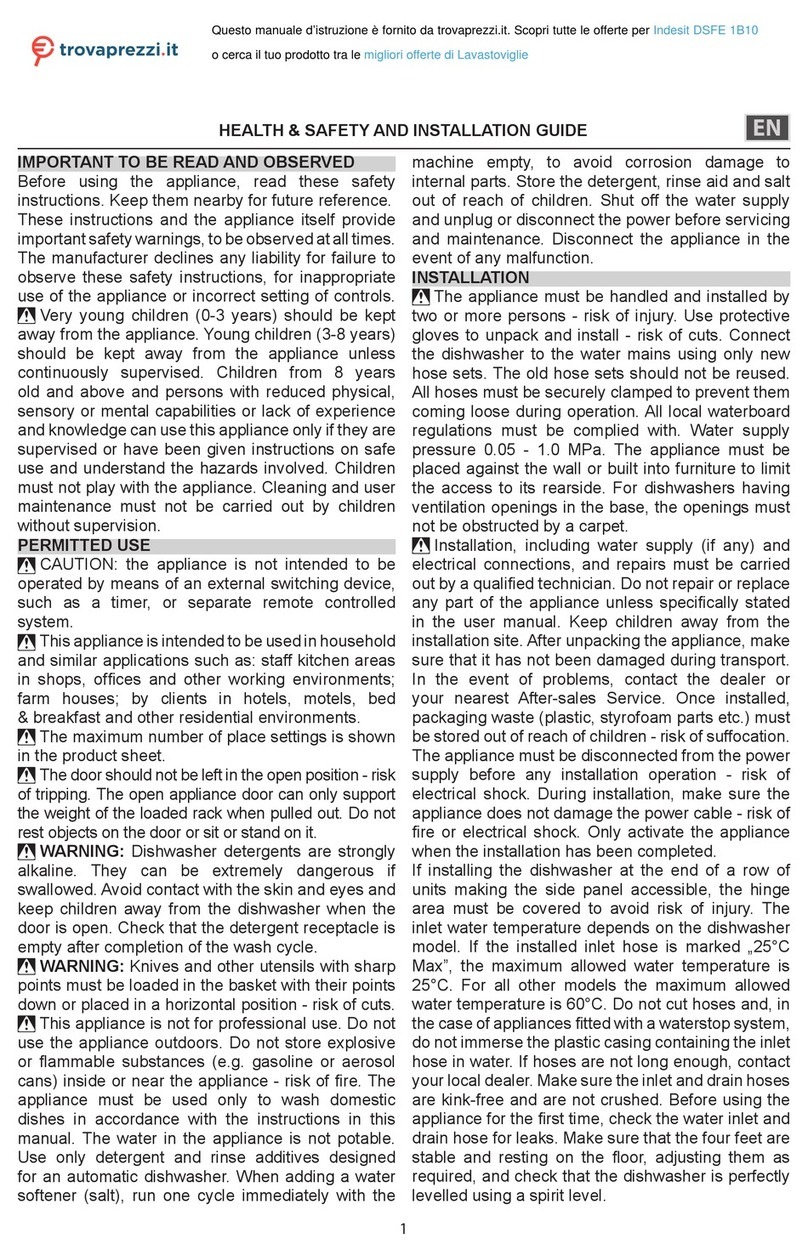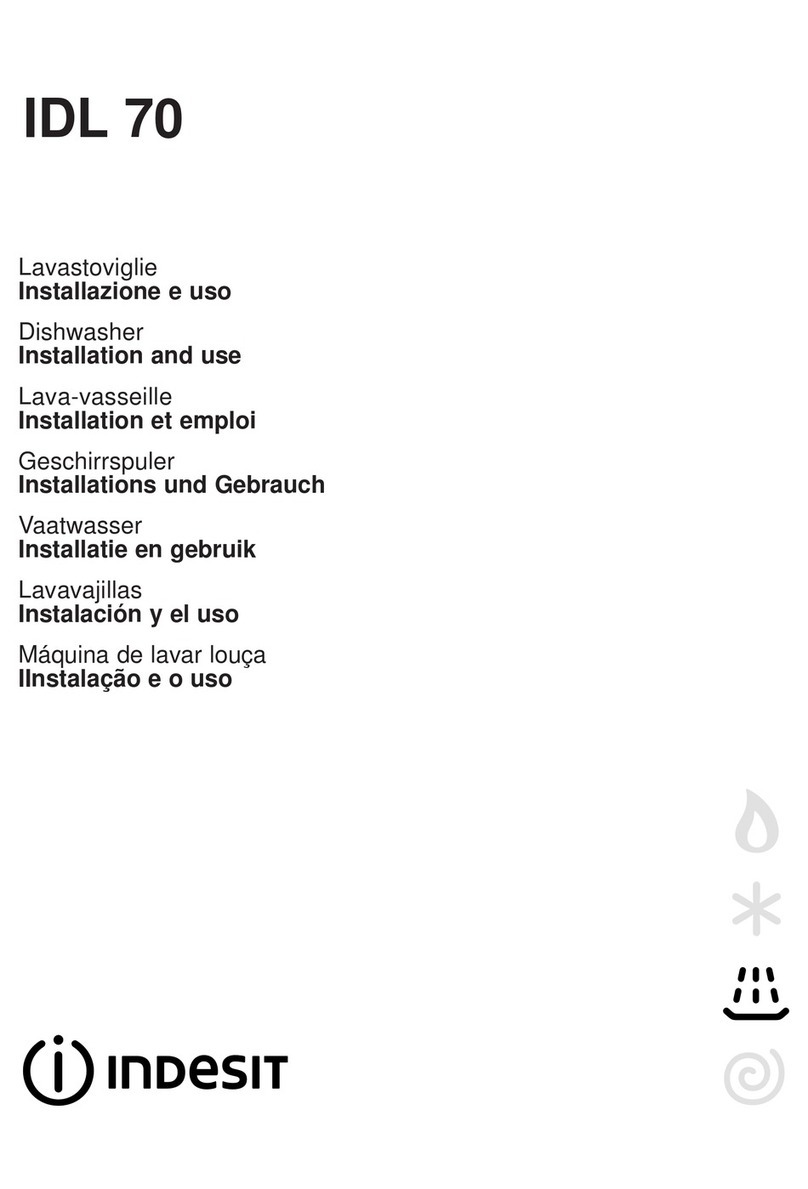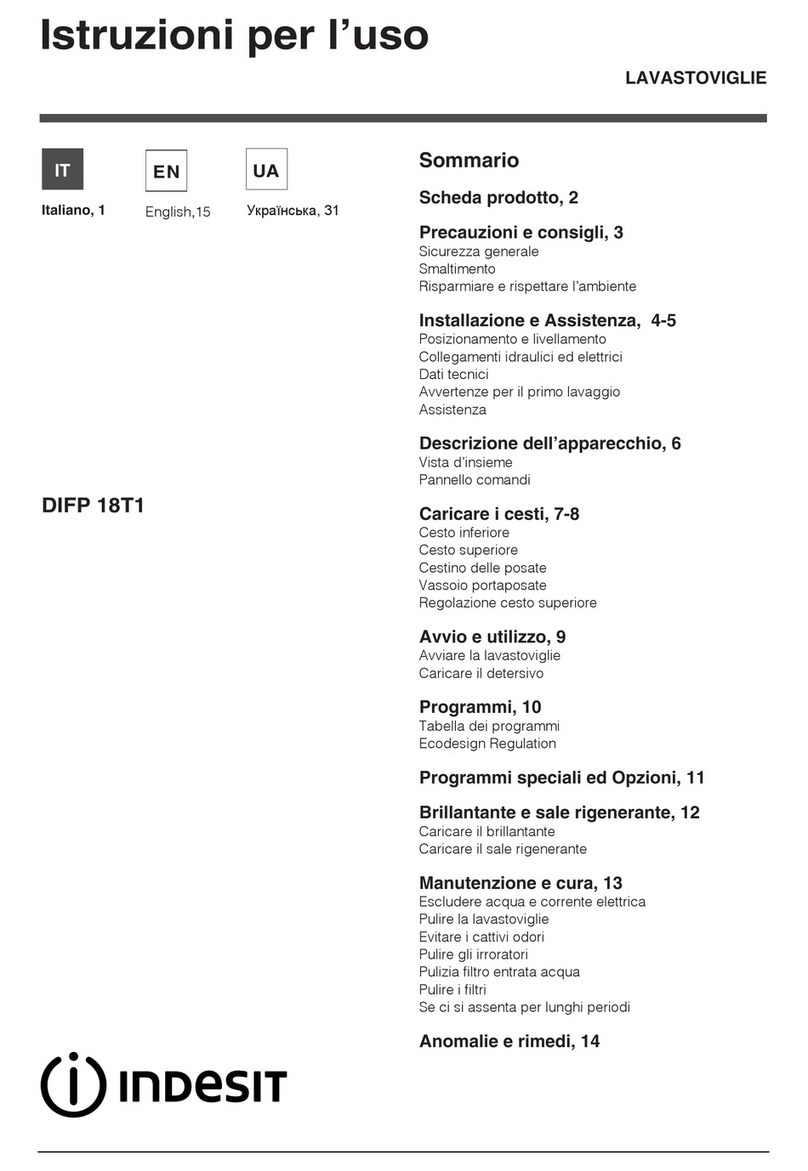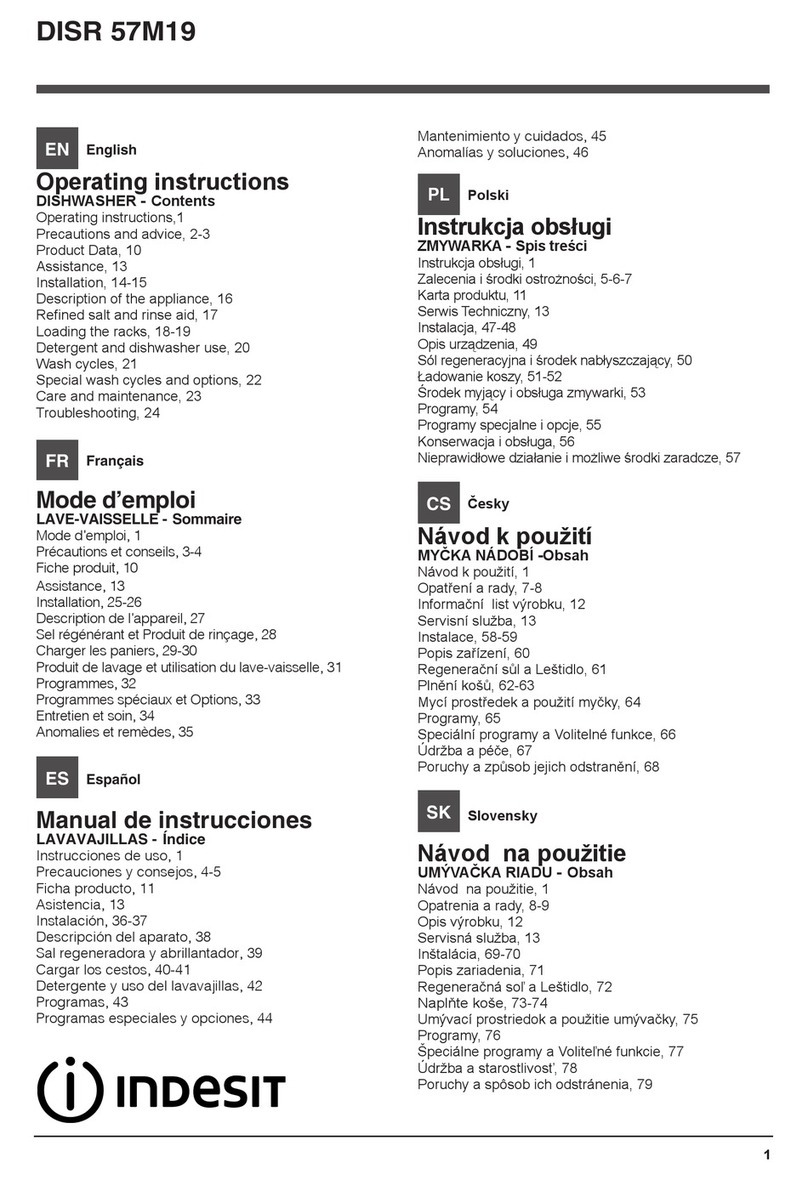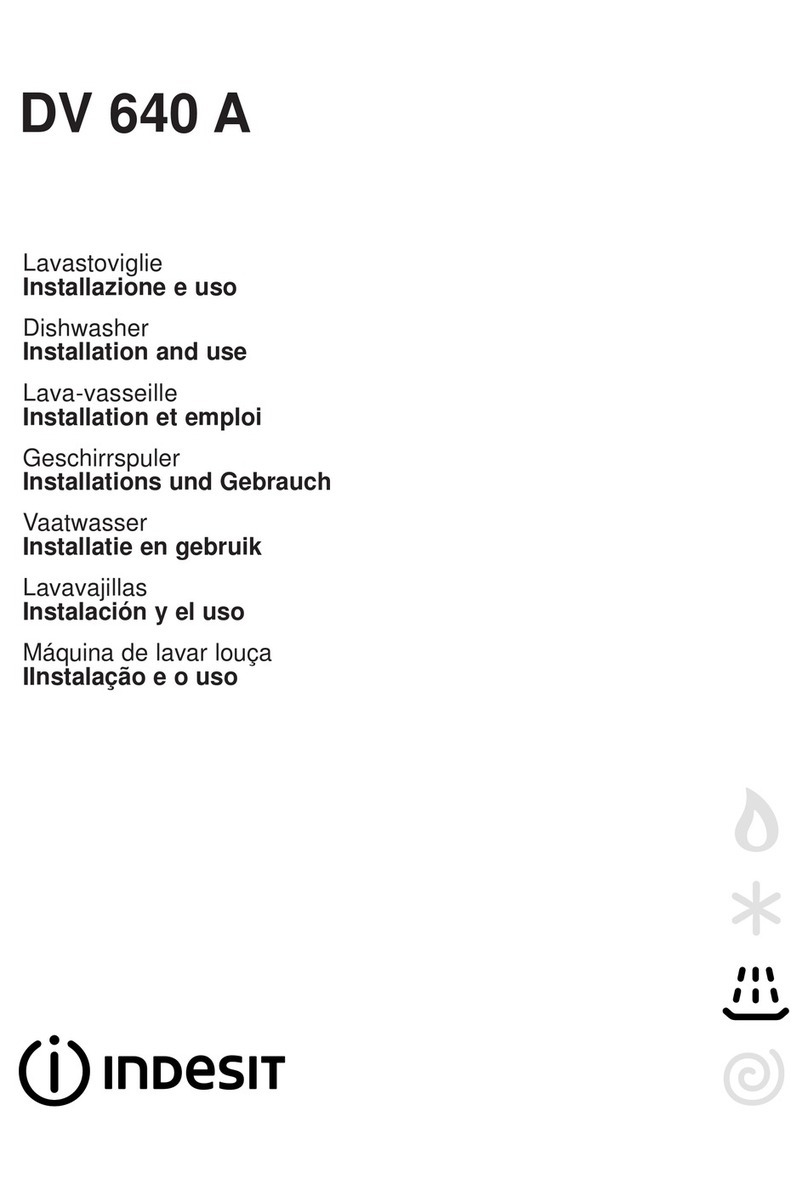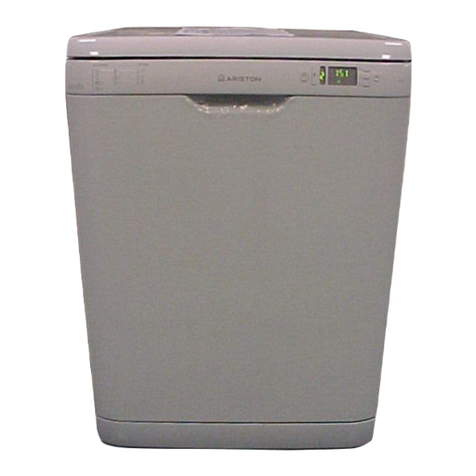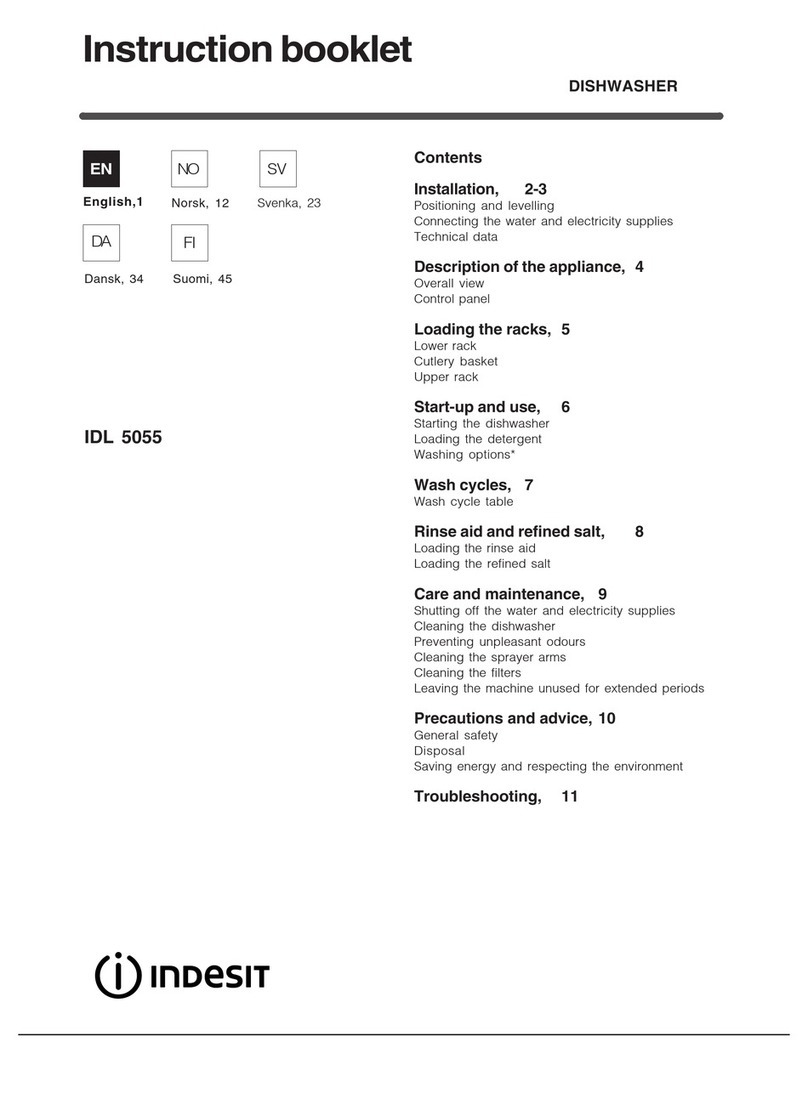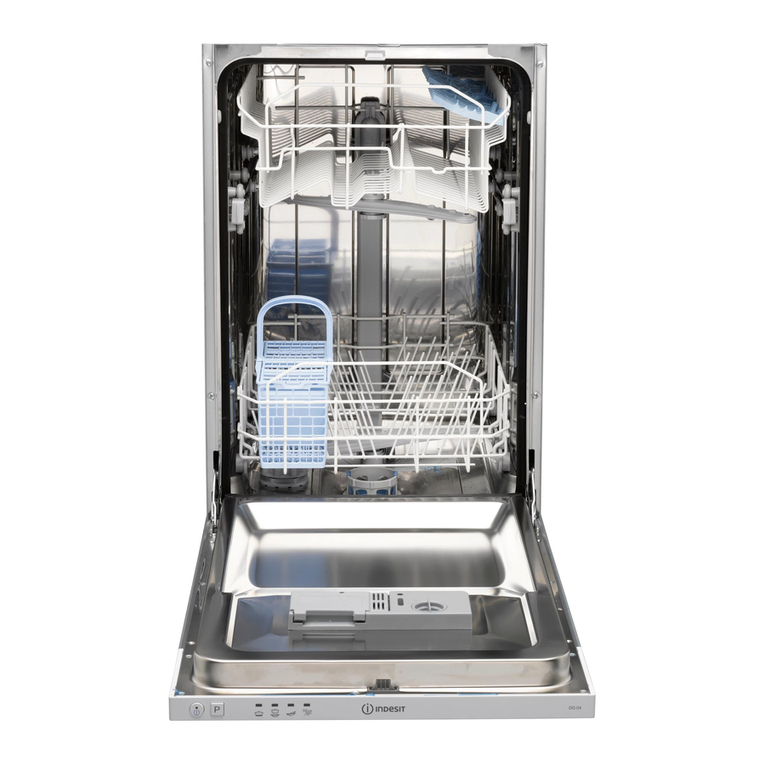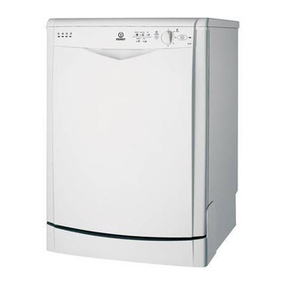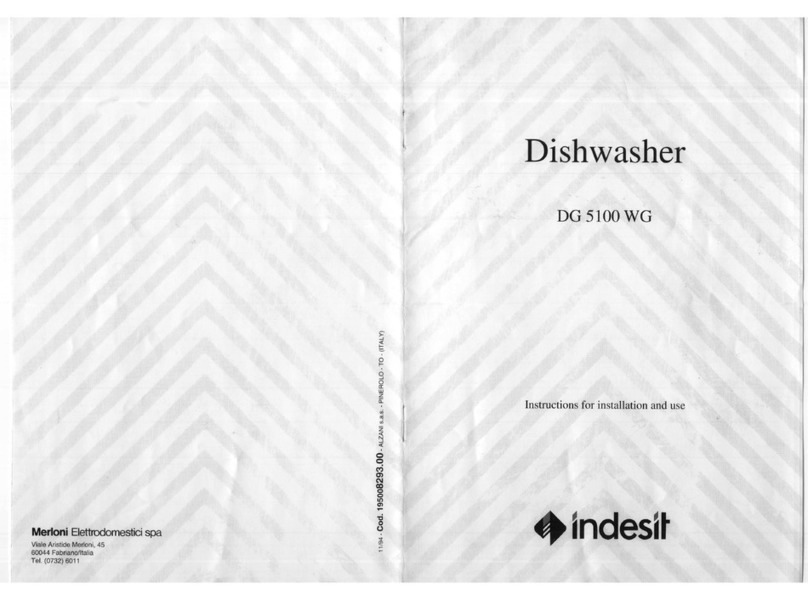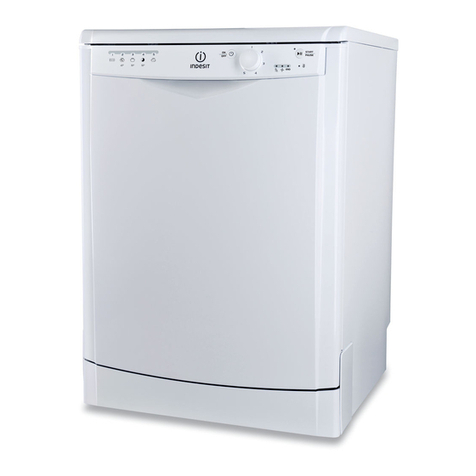
8
IT
Brillantanteesale
rigenerante
G
F
Usare solo prodotti specifici per lavastoviglie.
Non usare sale alimentare o industriale nè detersivi
per il lavaggio a mano.
Seguire le indicazioni riportate sulla
confezione.
Se si usa un prodotto multifunzione, non è necessario
aggiungere brillantante, si consiglia invece di aggiungere
sale, specie se l’acqua è dura o molto dura. Seguire le
indicazioni riportate sulla confezione.
Non aggiungendo né sale né brillantante è
normale che le spie MANCANZA SALE*e
MANCANZA BRILLANTANTE*rimangano accese.
Caricare il brillantante
Il brillantante facilita l’asciugatura delle stoviglie facendo
scivolare l’acqua dalla superficie, così che non rimangano
striature o macchie.
Il serbatoio del brillantante va riempito:
• quando sul pannello si accende la spia MANCANZA
BRILLANTANTE*;1. Aprire il serbatoio ruotando il
tappo (G) in senso antiorario.
2. Versare il brillantante evitando
che fuoriesca. Se accade, pulire
subito con un panno asciutto.
3. Riavvitare il tappo.
Non versare MAI il brillantante
direttamente all’interno della
vasca.
Regolare la dose di brillantante
Se non si è soddisfatti del risultato dell’asciugatura, è possibile
regolare la dose di brillantante. Con un cacciavite girare il
regolatore (F) scegliendo tra 6 posizioni (la regolazione di
fabbrica è sul 4):
• se sulle stoviglie ci sono striature, girare verso i numeri
bassi (1-3).
• se ci sono gocce d’acqua o macchie di calcare girare verso
i numeri alti (4-6).
Impostazione durezza dell’acqua
Ogni lavastoviglie è corredata di un dolcificatore dell’acqua
che,utilizzando del salerigenerante specifico perlavastoviglie,
fornisce acqua priva di calcare per il lavaggio delle stoviglie.
Questa lavastoviglie, consente una regolazione che riduce
l’inquinamentoed ottimizzale prestazionidi lavaggioin funzione
della durezza dell’acqua. Il dato è reperibile presso l’Ente
erogatore dell’acqua potabile.
- Aprire la porta ed accendere la macchina premendo il tasto
ON/OFF.
- Premere il tasto P per circa 5 secondi; si sentono due bip
brevi e lampeggia lentamente sul pannello di controllo la spia
relativa al grado di durezza impostato (Il decalcificatore è
impostato di fabbrica sul n° 3).
- Premere il tasto P in successione fino al raggiungimento
della durezza desiderata (1-2-3-4-5*
Vedi tabella durezza
acqua
).
Es. durezza livello 1 (spia 1° progr. lampeggia);
durezza livello 2 (spia 1° progr. accesa, spia 2° progr.
lampeggia);
durezza livello 3 (spia 1° e 2° progr. accese, spia 3° progr.
lampeggia ecc... ecc.) fino ad un massimo di 5*livelli.
-Peruscire dallafunzione attendere alcunisecondi opremereun
tasto delle opzioni*o spegnere la macchina con il tasto ON/
OFF.
Se si utilizzano le pastiglie multifunzione, riempire comunque il
serbatoiodel sale.
(°dH = durezza in gradi tedeschi - °fH = durezza in gradi
francesi - mmol/l = millimol/litro)
Caricare il sale rigenerante
Per avere buoni risultati di lavaggio è indispensabile verificare
che il serbatoio del sale non sia mai vuoto. Il sale rigenerante
elimina il calcare dall’acqua, evitando che si depositi sulle
stoviglie. Il serbatoio del sale è posto nella parte inferiore della
lavastoviglie (
vedi Descrizione
) e va riempito:
• quando il galleggiante verde*non è visibile osservando il
tappo del sale;
• quandosul pannello si accendela spia MANCANZA SALE*;
1. Estrarre il cesto inferiore e svitare il tappo
delserbatoio in sensoantiorario.
2.Soloperilprimoutilizzo: riempireilserbatoio
diacqua fino al bordo.
3.Posizionarel’imbuto*(
vedifigura
)eriempire
il serbatoio di sale fino al bordo (circa 1 kg); è normale che
trabocchiun po’d’acqua.
4. Togliere l’imbuto*, eliminare i residui di sale dall’imbocco;
sciacquare il tappo sotto l’acqua corrente prima di avvitarlo,
disponendoloatestaingiùefacendodefluirel’acquadallequattro
fessure disposte a stella nella parte inferiore del tappo. (tappo
congalleggiante verde*)
E’ consigliabile effettuare questa operazione ad ogni
caricamento del sale.
Chiuderebene il tappo,affinché nelserbatoio nonentri detersivo
durante il lavaggio (potrebbe danneggiarsi irrimediabilmente il
dolcificatore).
Quando si rende necessario, caricare il sale prima di un
ciclo di lavaggio in modo da eliminare la soluzione salina
traboccatadal contenitoredel sale.
*Presente solo su alcuni modelli.
Tabella Durezze Acqua Autonomia media**
contenitore sale
livello °dH °fH mmol/l mesi
1 0 - 6 0 - 10 0 - 1 7 mesi
2 6 - 11 11 - 20 1,1 - 2 5 mesi
3 12 - 17 21 - 30 2,1 - 3 3 mesi
4 17 - 34 31 - 60 3,1 - 6 2 mesi
5*
34 - 50
61 - 90
6,1 - 9
2/3 settimane
Da 0°f a 10°f si consiglia di non utilizzare sale.
* con impostazione 5 la durata può prolungarsi.
** con 1 lavaggio al giorno
